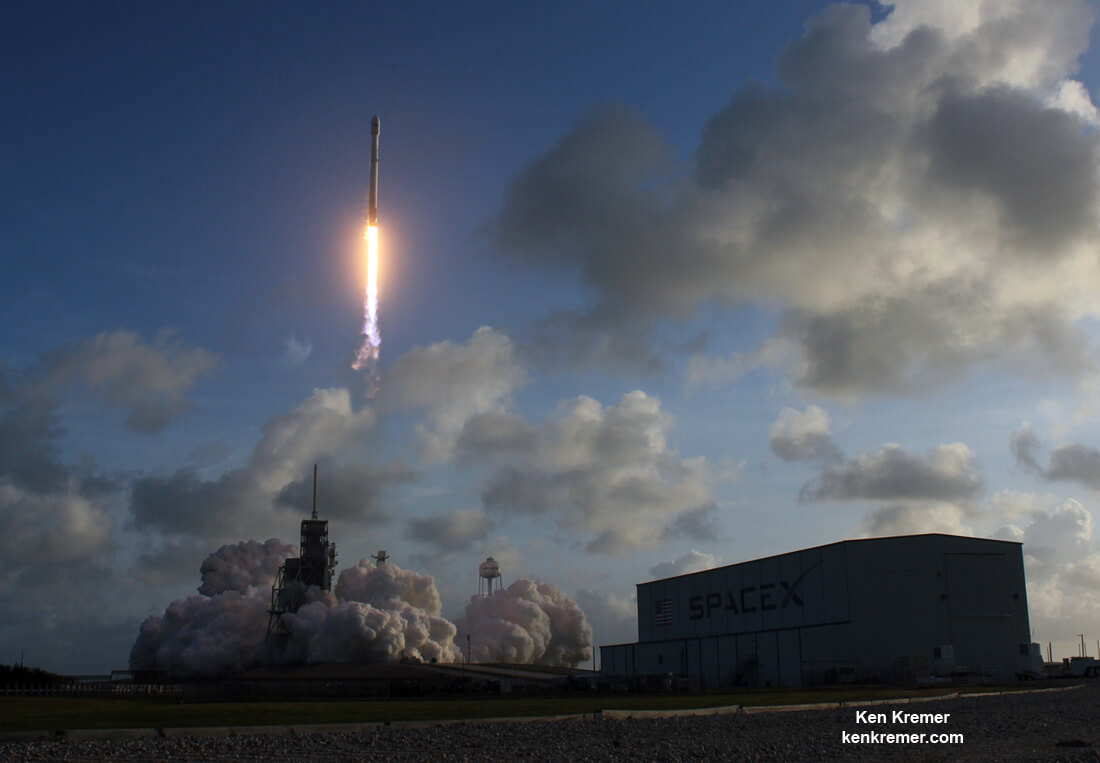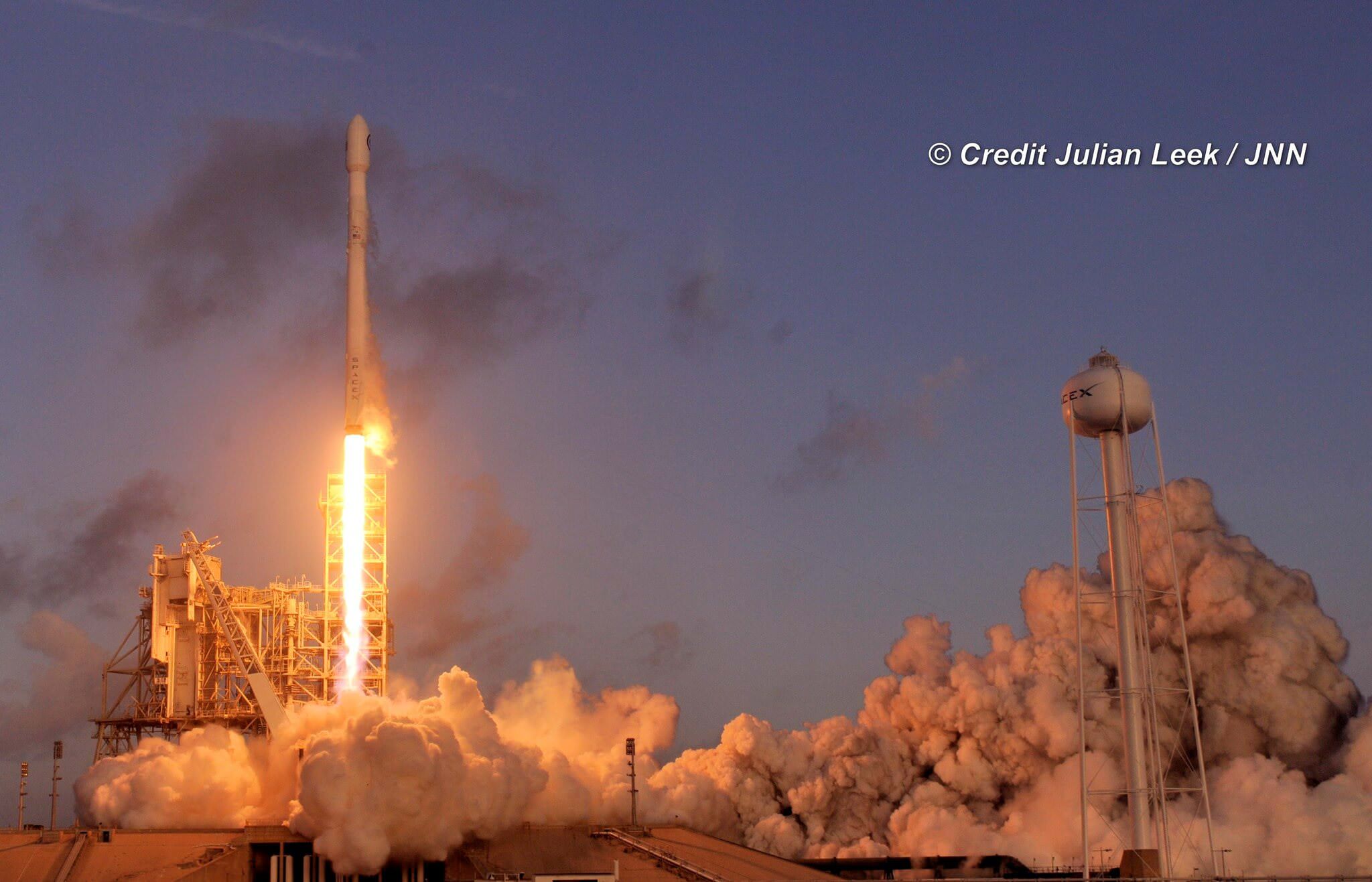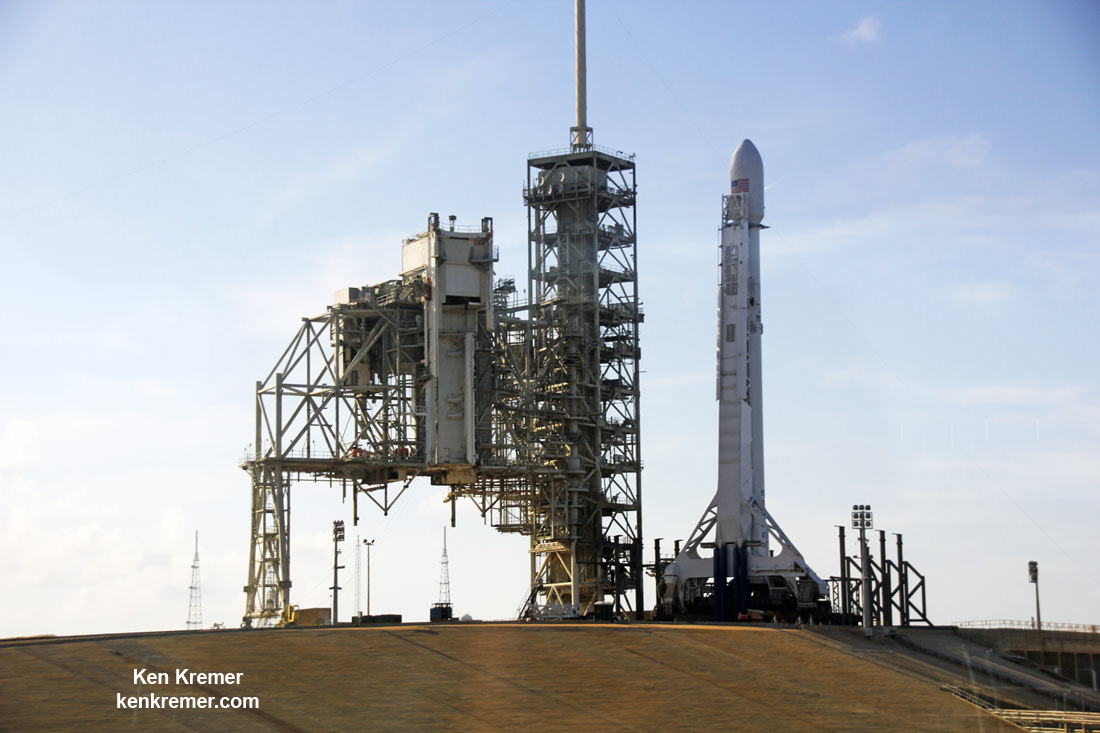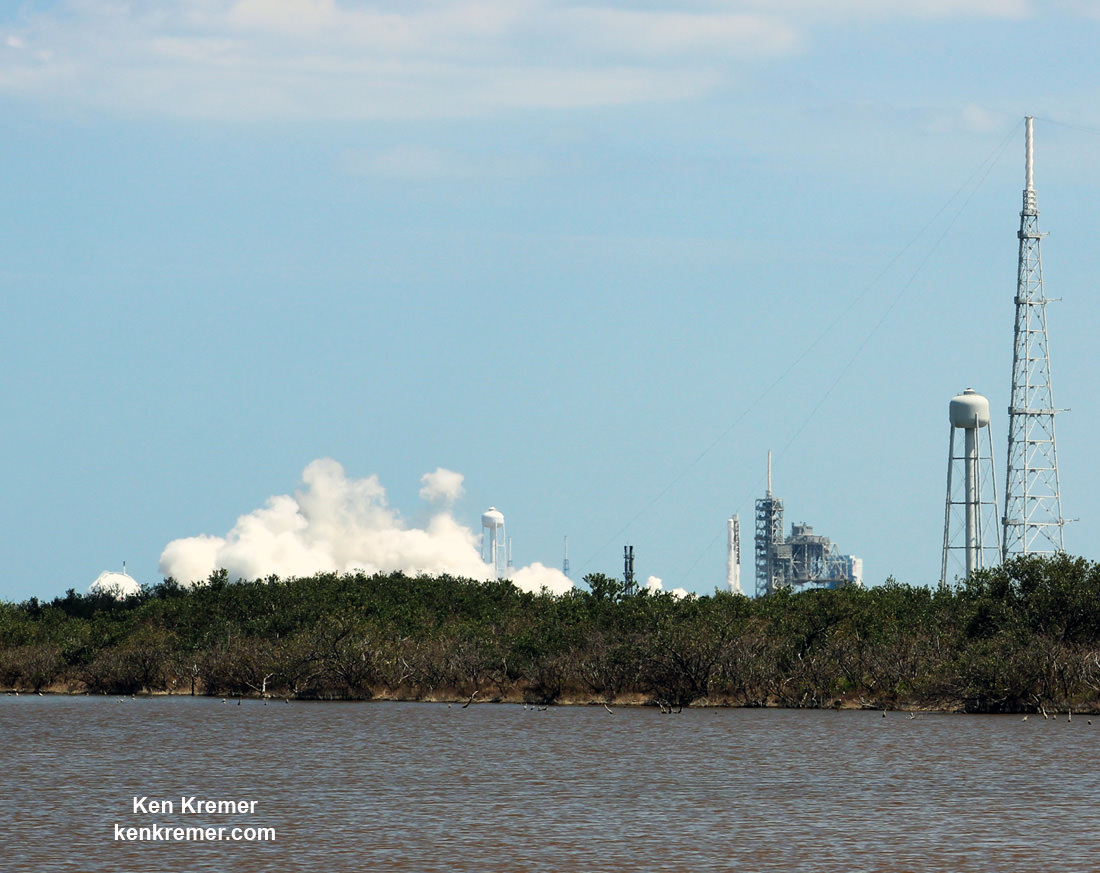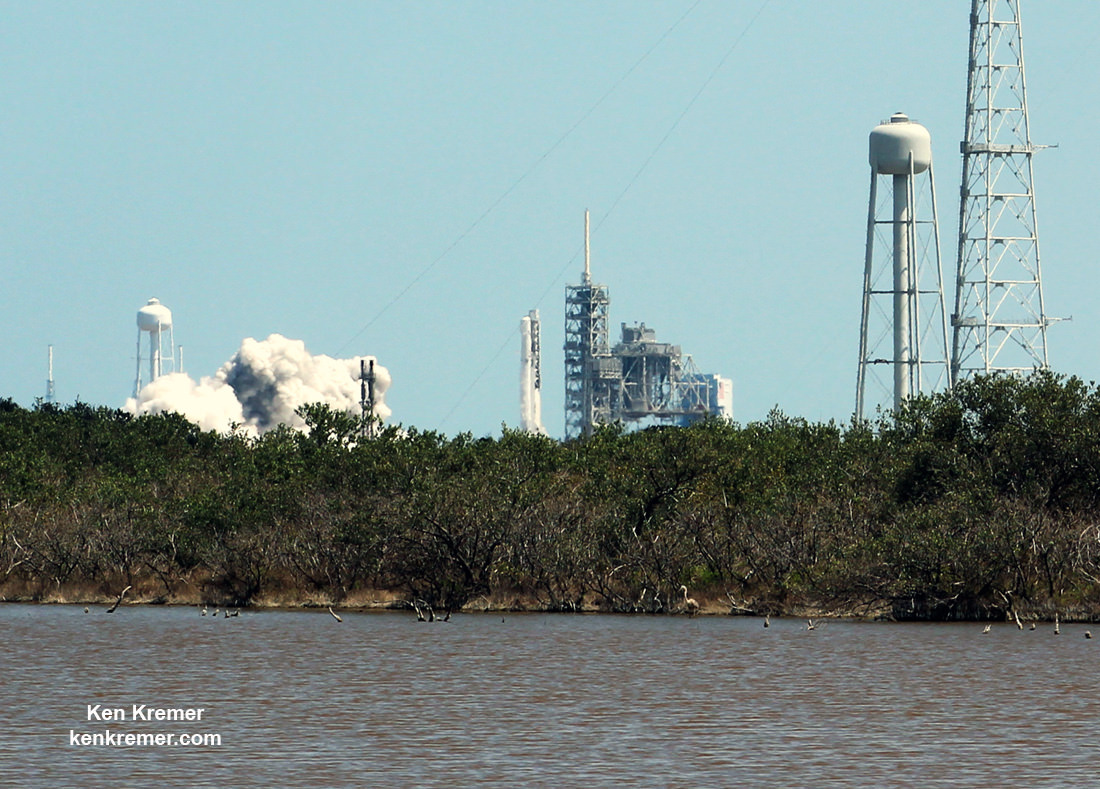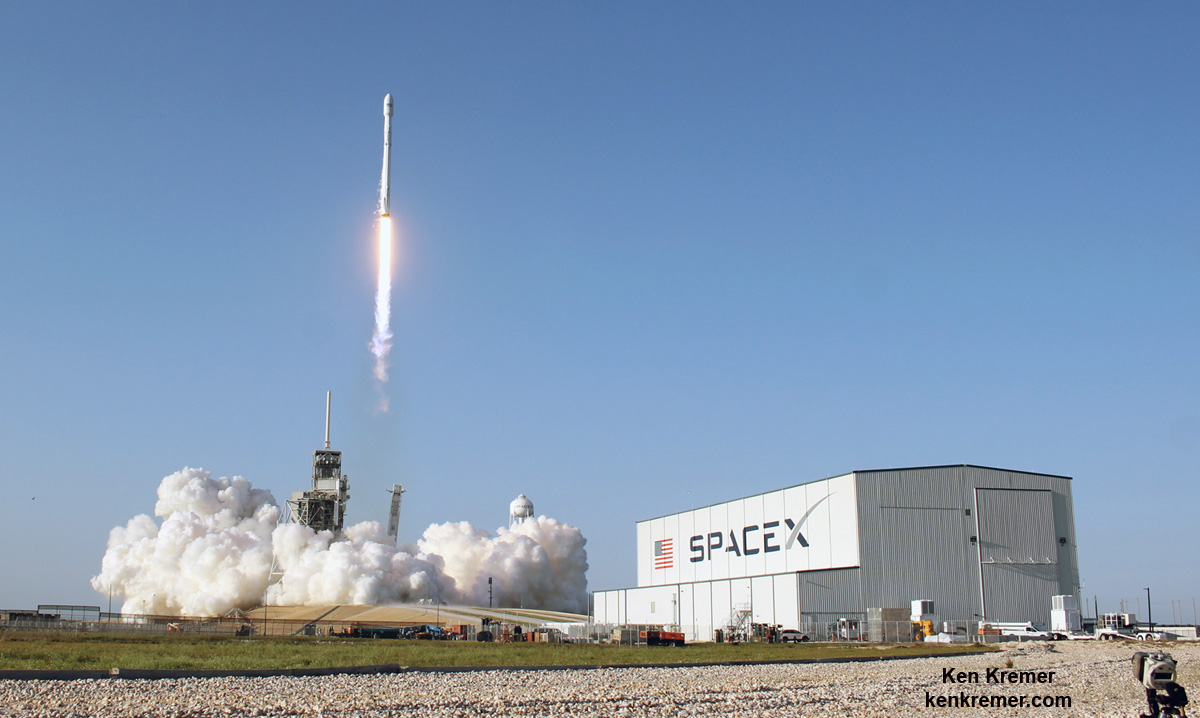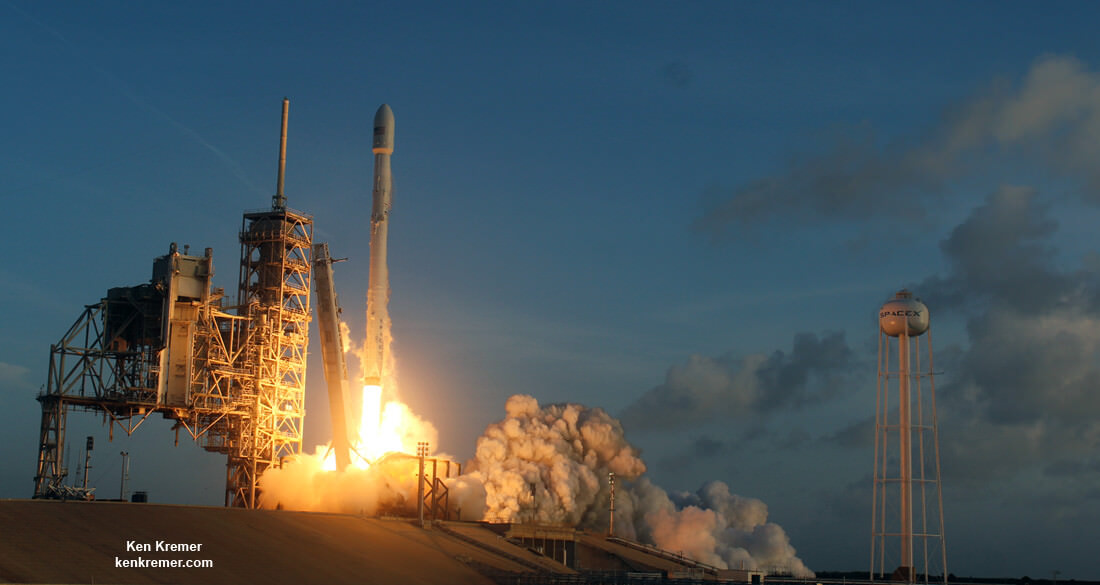
KENNEDY SPACE CENTER, FL – This week SpaceX blasted their first top secret surveillance satellite to orbit for America’s spy chiefs at National Reconnaissance Office (NRO) – affording magnificent viewing and imagery from the Florida Space Coast. Updated with more photos/videos – plus distinctly hear the sonic booms from pad 39A sending birds fleeing!
Liftoff of the classified NROL-76 payload for the NRO occurred soon after sunrise Monday morning, May 1, at 7:15 a.m. EDT (1115 GMT), from SpaceX’s seaside Launch Complex 39A on NASA’s Kennedy Space Center in Florida.
Less than nine minutes later, Space engineers managed to again recover the 15 story tall first stage booster by accomplishing a precise ground landing by perfectly targeting the vehicle for a propulsive soft landing at Cape Canaveral several miles south of the launch pad.

The stunning events were captured by journalists and tourists gathered from around the globe to witness history in the making with their own eyeballs.
Check out this expanding gallery of eyepopping photos and videos from several space journalist colleagues and friends and myself – for views you won’t see elsewhere.
Click back as the gallery grows !
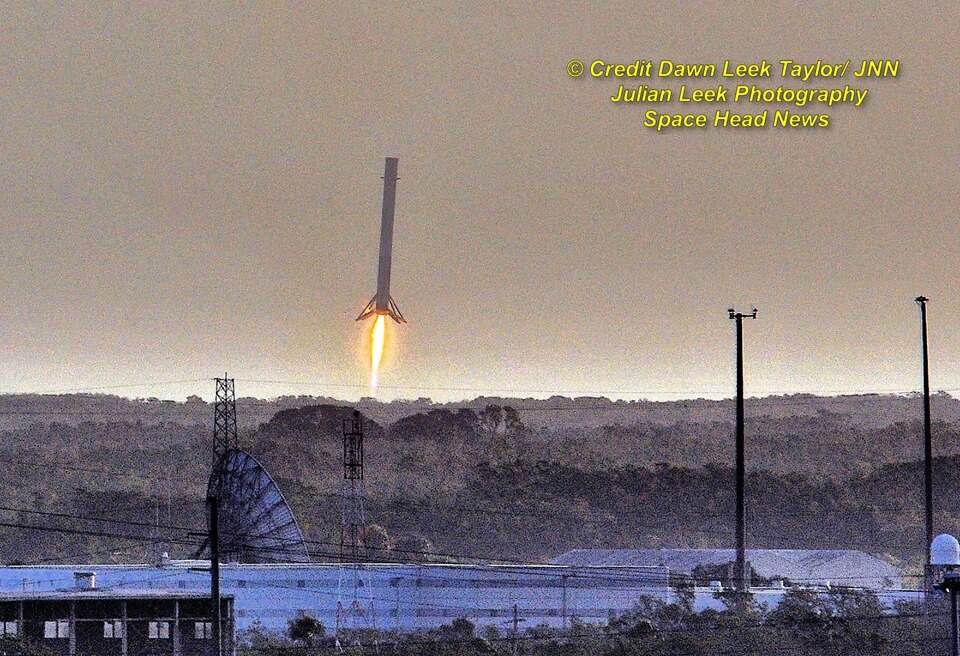
The milestone SpaceX mission to launch the first satellite in support of US national defense was apparently a complete success.
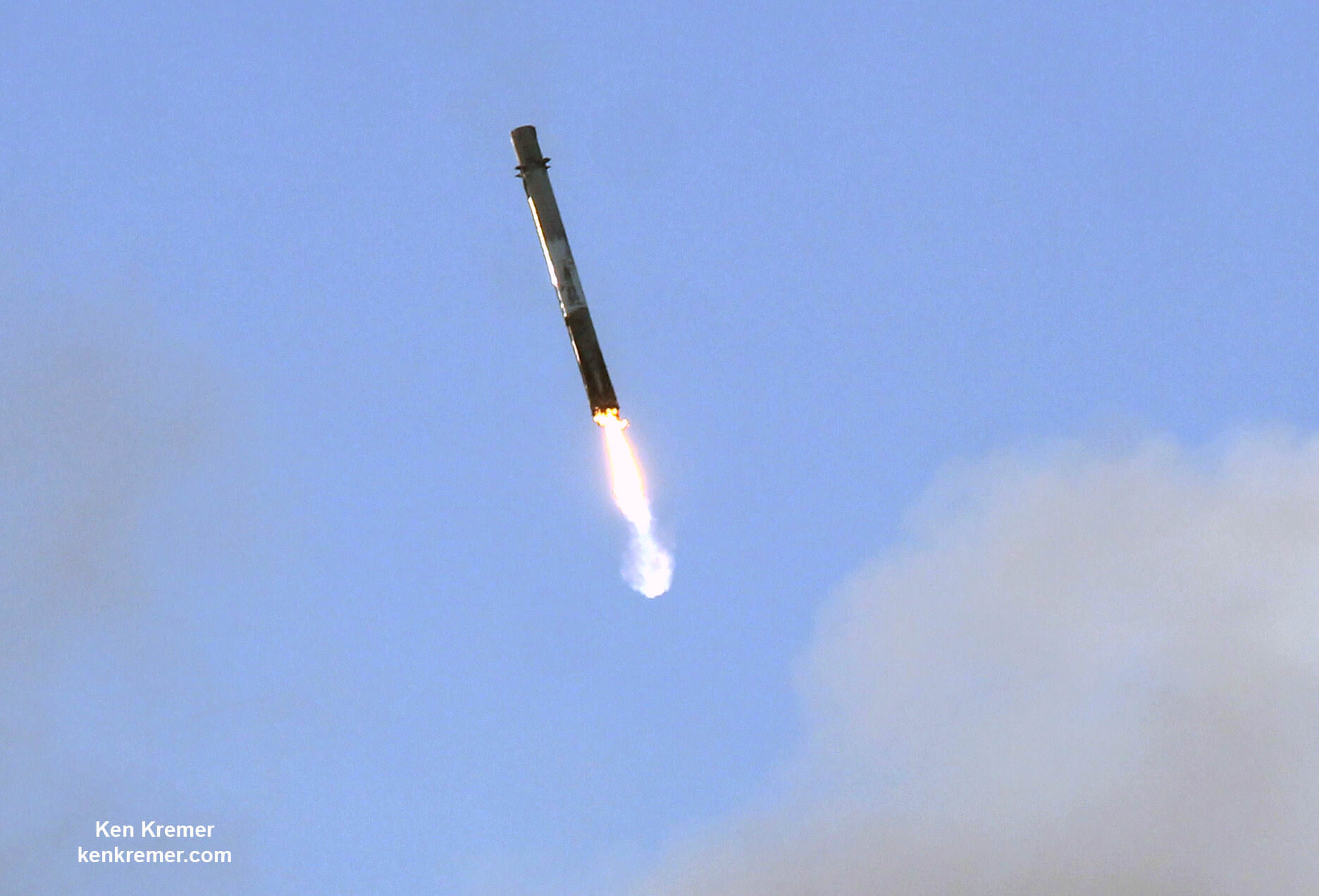
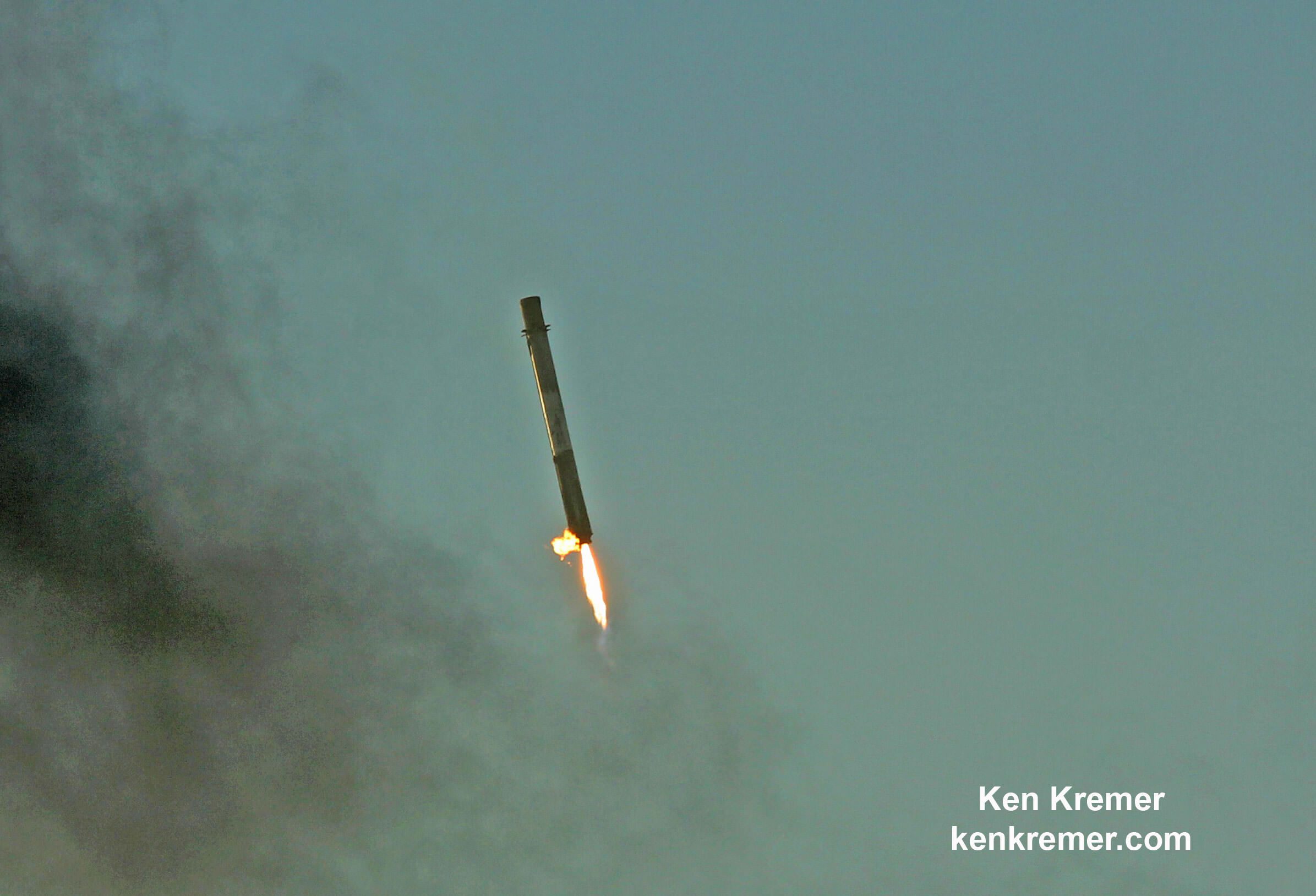
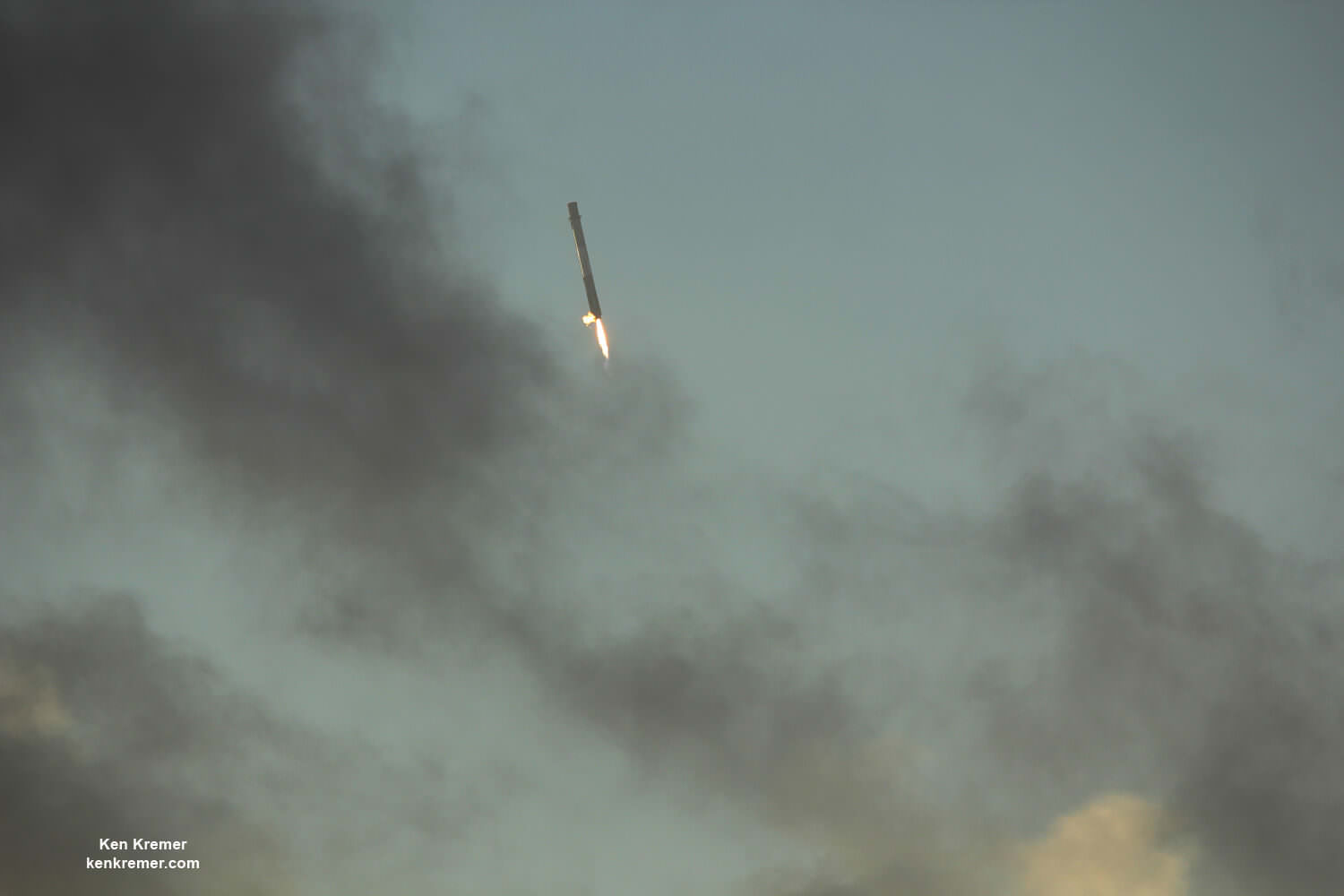
Check out these exquisite videos from a wide variety of vantage points including remote cameras at the pad, Cape Canaveral media viewing site and public viewing locations off base.
Video Caption: SpaceX Falcon 9 liftoff with NROL-76 on 1 May 2017. This is the first launch of an NRO satellite on a SpaceX Falcon 9 rocket and the 4th launch from Pad 39A this year. Credit: Jeff Seibert
In this cool video you can distinctly hear the Falcon 9 sonic booms eminating at LZ-1 from pad 39A sending birds fleeing aflutter in fright!
Video Caption: Falcon 9 sonic booms heard from Pad 39A. These two cameras recorded the launch of the NROL-76 satellite at https://youtu.be/kkKTe_61jk0
Nine minutes after launch, they recorded the sonic booms caused by the booster landing at LZ-1, 9.5 miles south of Launch Pad 39A on 1 May 2017. Credit: Jeff Seibert
Video Caption: SpaceX Launch and Best Landing – NROL76 05-01-2017. Best landing for spectators. Watch the nitrogen thruster’s steer the 16 story booster. Hear double sonic boom at the end. Audio is delayed from podcast. We can not match SpaceX and NASA tracking telescope coverage. Was really awesome for all who witnessed. Credit: USLaunchReport
NROL-76 marks the fifth SpaceX launch of 2017 and the fourth from pad 39A.
The NRO is a joint Department of Defense–Intelligence Community organization responsible for developing, launching, and operating America’s intelligence satellites to meet the national security needs of our nation, according to the NRO.
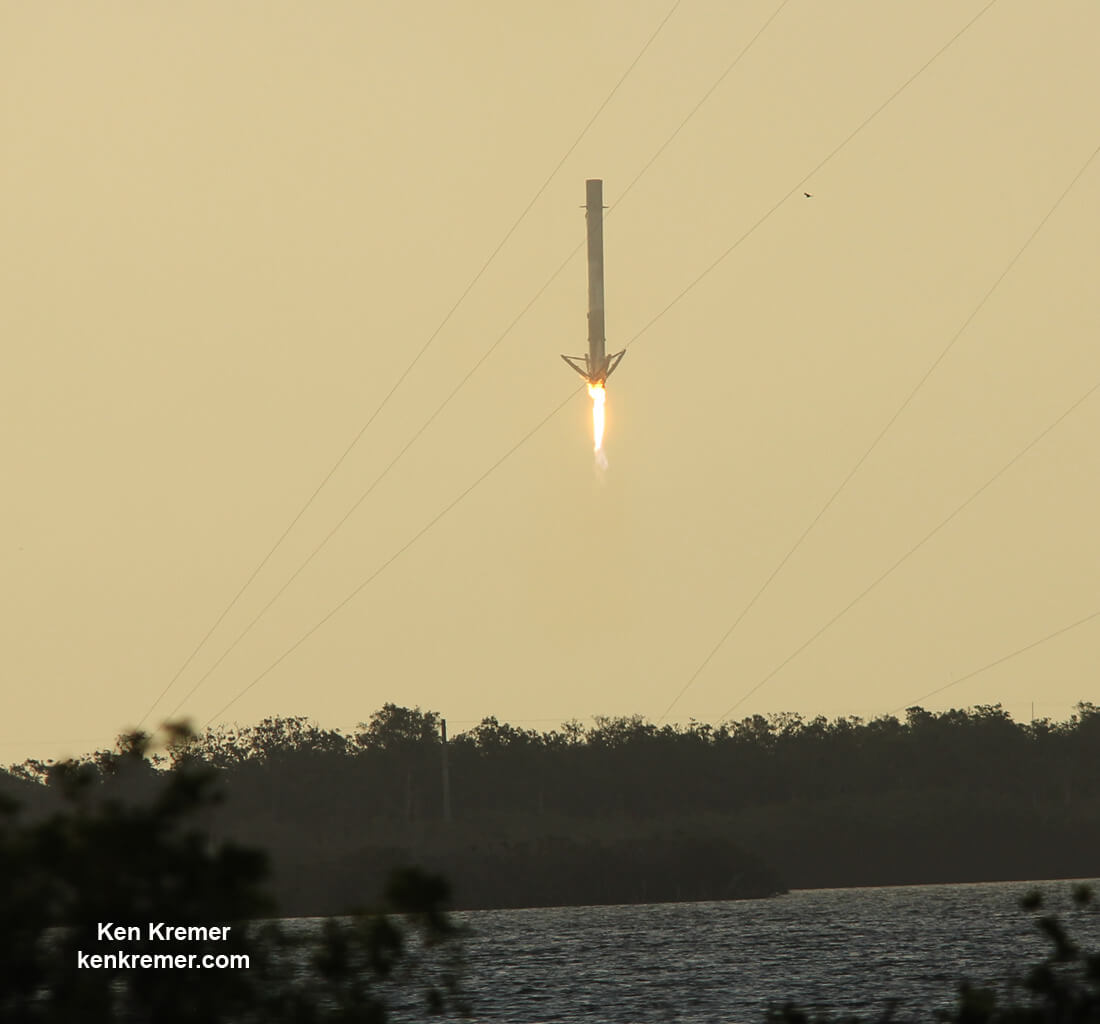

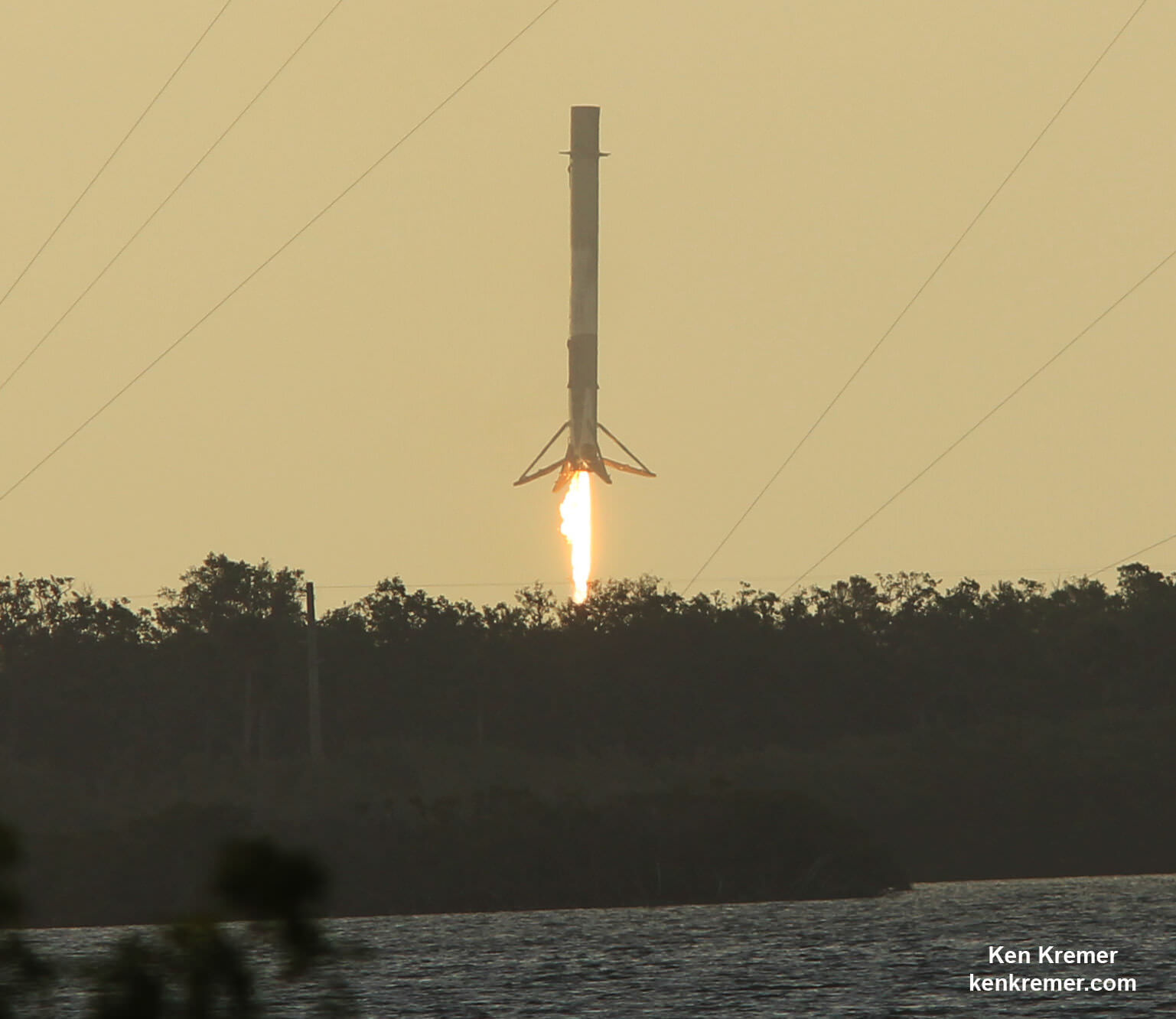
Watch for Ken’s continuing coverage direct from onsite at the Kennedy Space Center press site and Cape Canaveral Air Force Station.
Stay tuned here for Ken’s continuing Earth and Planetary science and human spaceflight news.
